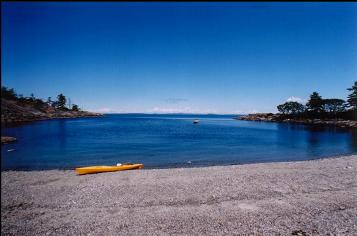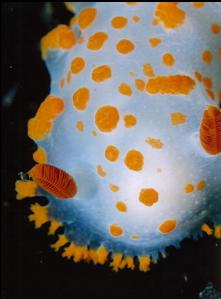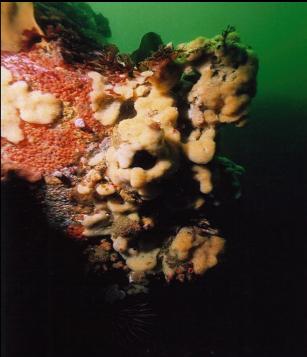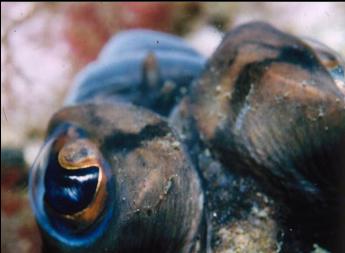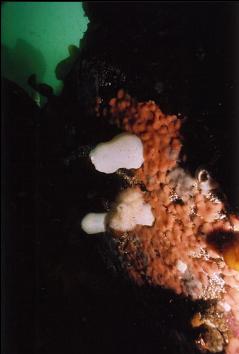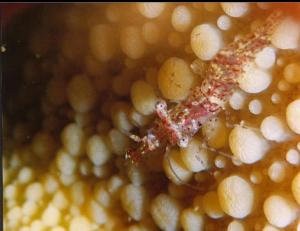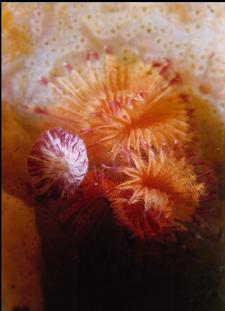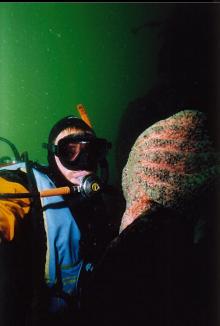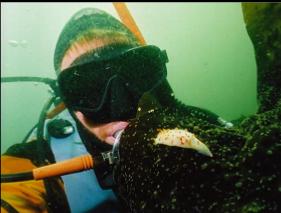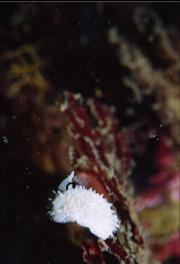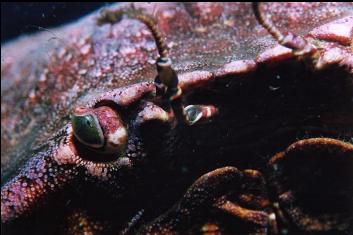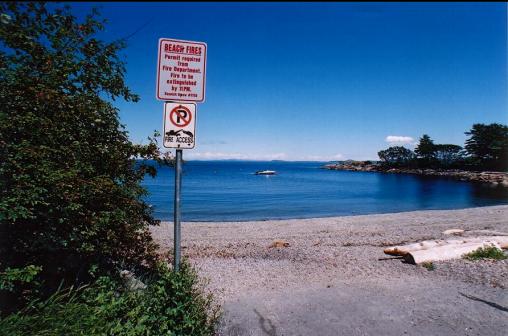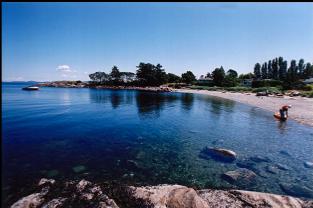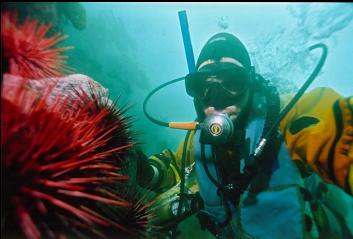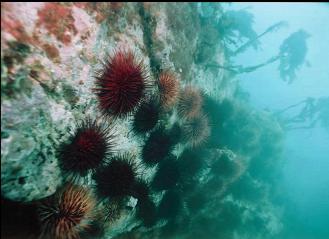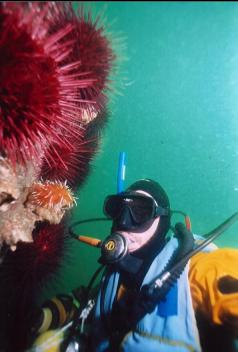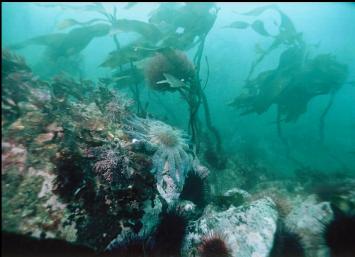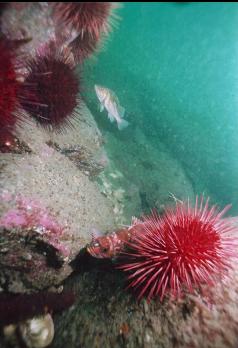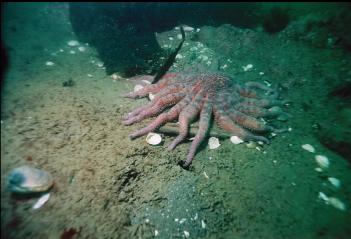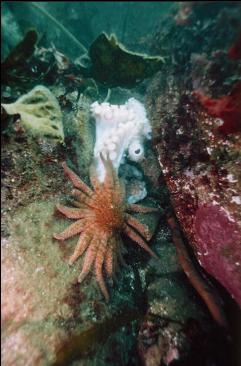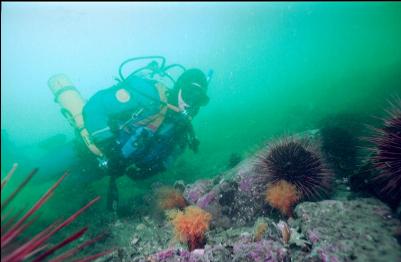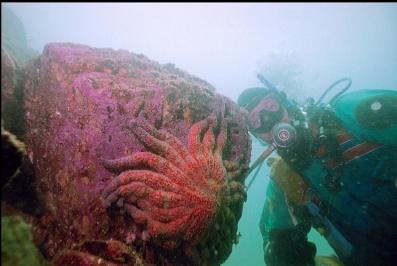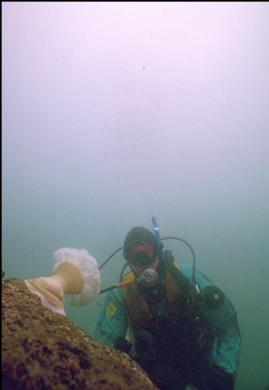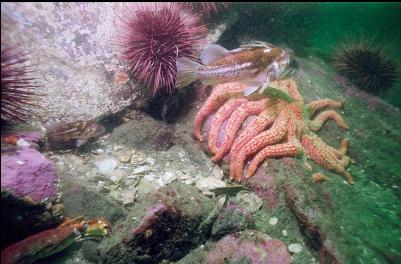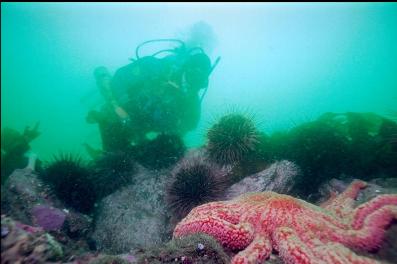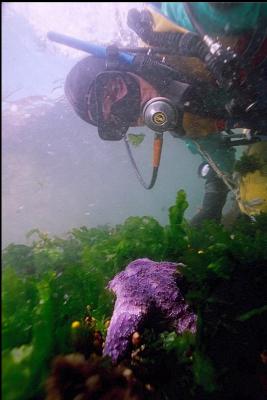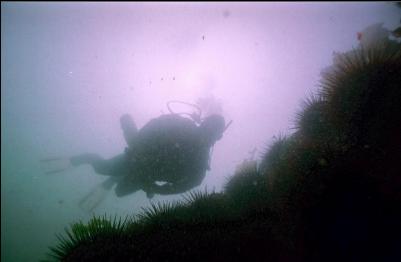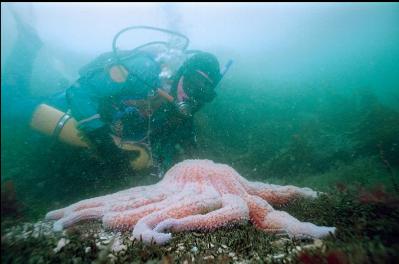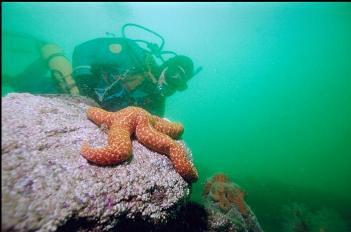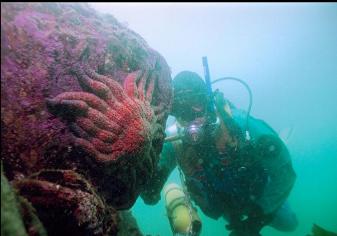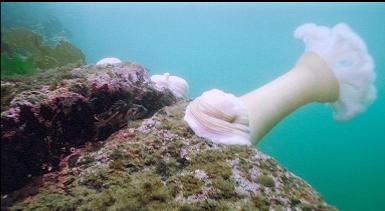SUMMARY: A shallow, fairly uninteresting dive. It's included in a few local dive guides so I'll include it here as well. LOCATION: At the end of Telegraph Bay road in the Ten Mile Point/University of Victoria area. WHAT TO SEE: There's not much in the bay itself. -Mostly rockweed, lettuce kelp and tiny barnacles. The middle of the bay has a flat, silty bottom. Out past the entrance to the bay, there is a shallow reef, usually marked by kelp. On the other side of this reef, the bottom slopes down gently to about 70 feet deep with small reefs/large boulders here and there on the sand. These rocks are quite bare with regards to invertebrate life. They look mostly grey from a coating of silt. There are a few nudibranchs, giant barnacles, and groups of urchins here and there. I've never seen many fish here either - just a few copper rockfish and kelp greenlings. If you swim out around the corner to the right, there are some exposed rocks on the surface (it's quite a swim). There is a bit more colour and life in this area (the current can be strong here too). This area is a maze of boulders, shallow reefs and kelp. There are some colourful encrusting tunicate colonies, giant barnacles and purple urchins - Basically the kind of local life you get with some current, but not too much. I've never seen many fish here. The deepest I've been able to get here is 40-50 feet before the rocks gave way to a plain of spongy mud. The left side of the bay is a slope of rock and small boulders. Out near the point this slope reaches the sand at around 30 feet. There are lots of copper rockfish, gobies, red rock crabs, gunnels, purple urchins, orange burrowing cucumbers, California cucumbers, sea stars and a few plumose anemones. There are quite a few octopus dens and I've seen grunt sculpins and painted greenlings here. If you swim farther around the point, the reef eventually leads down to around 65 feet and becomes quite steep. There are even a few walls, but it's a long swim. These reefs eventually meet up with the reefs off Cranford Park. CONDITIONS: There is very little current (if any) in the bay, but once you leave the bay, it can be noticeable, especially the farther you go to the right. In the summer, it's hard to see anything on the bottom because of the kelp. It's a bit of a swim just to leave the bay and if you want to go below 30 feet, it's even farther. The swim back seems twice as long. Visibility seems to be a constant 15-20 feet, but I've only been here a few times.


